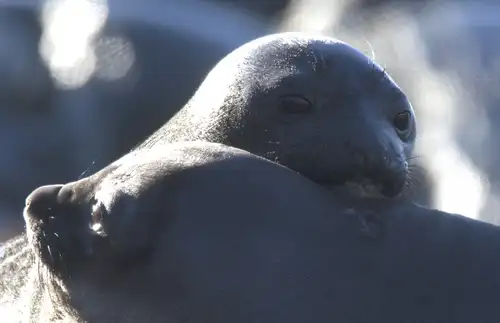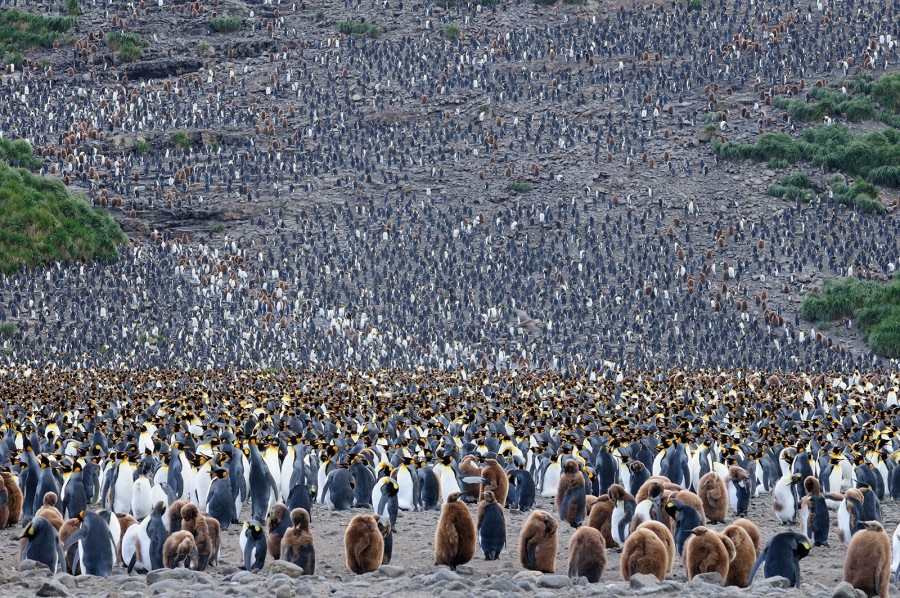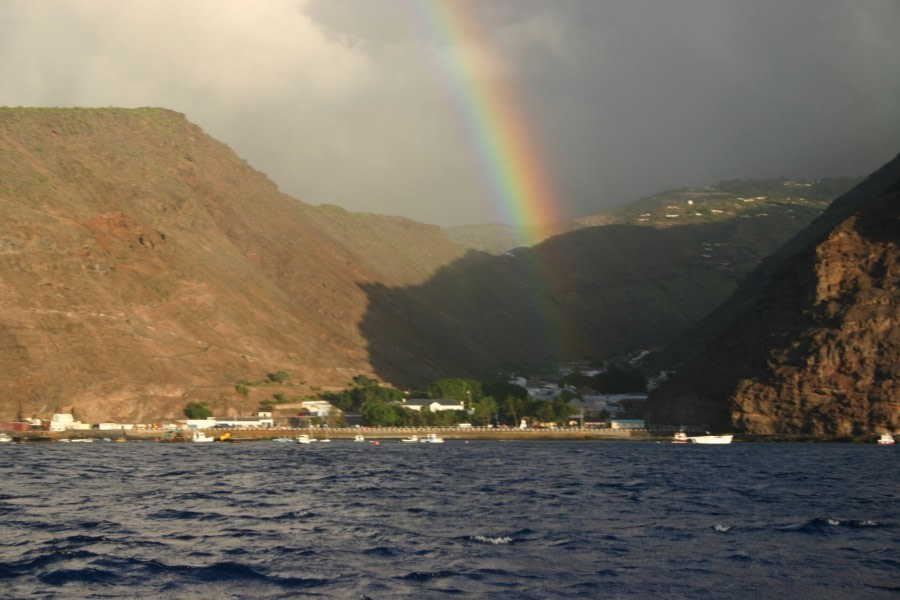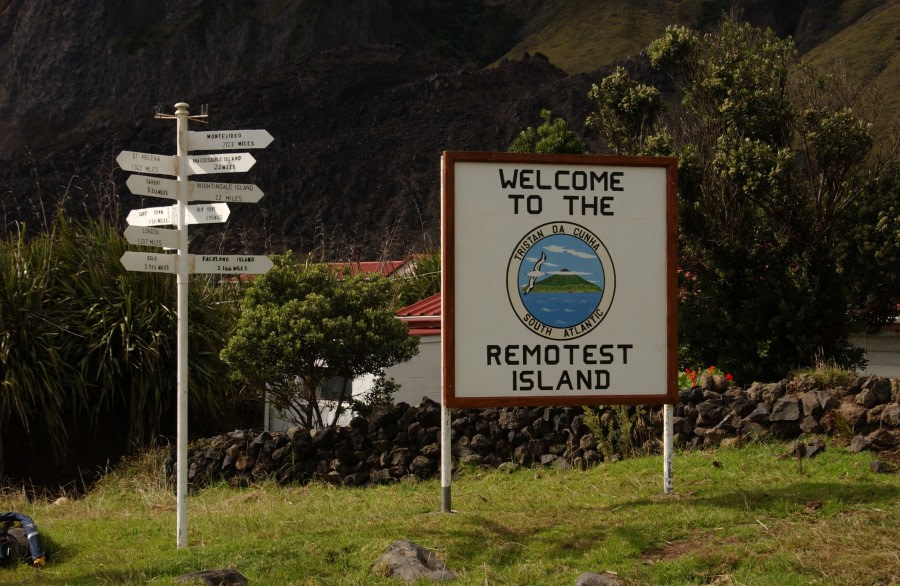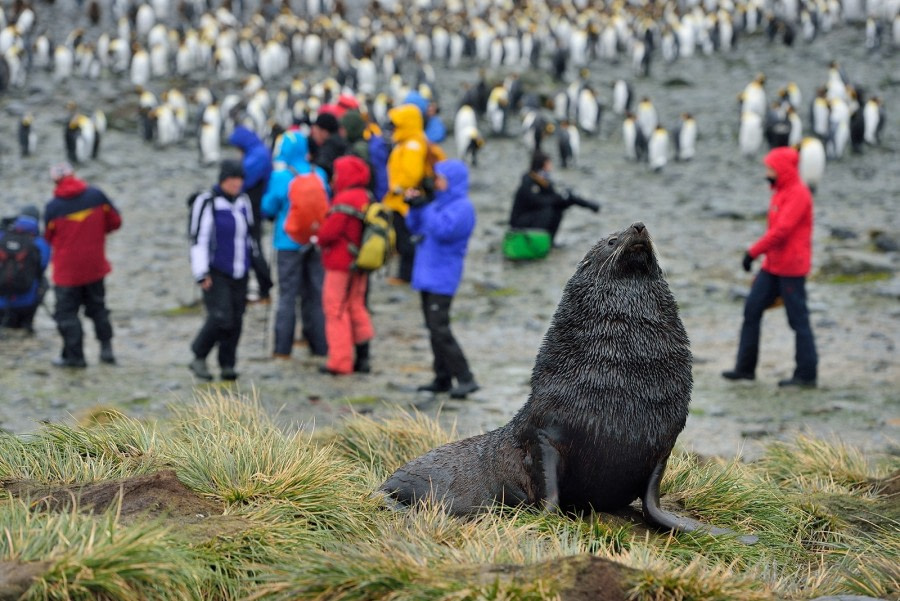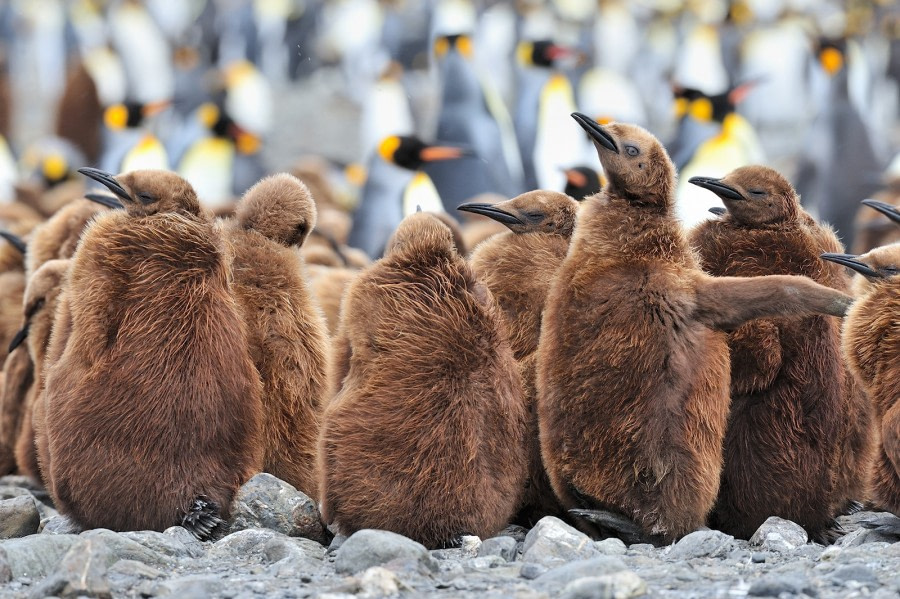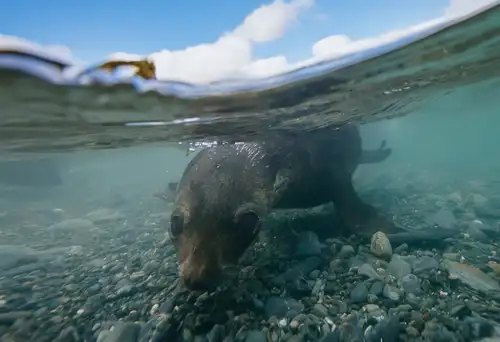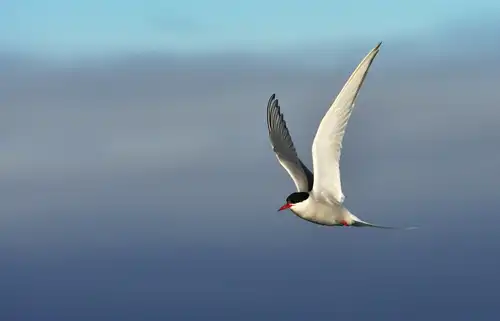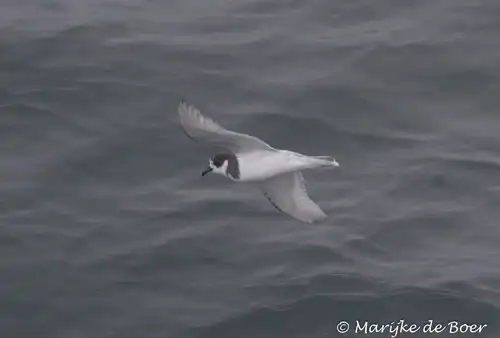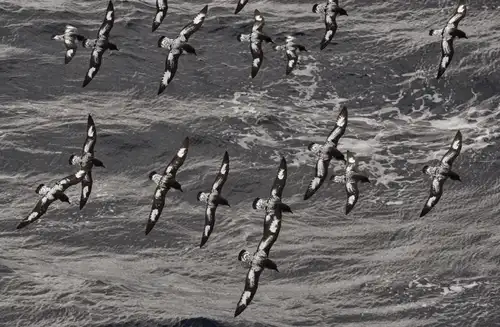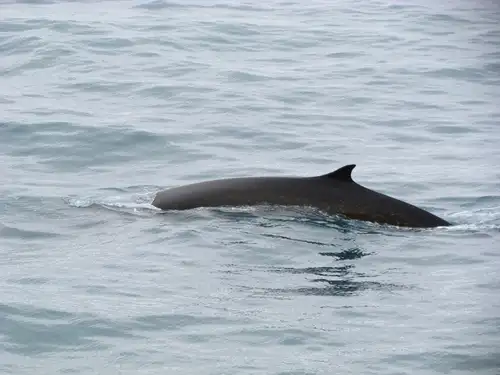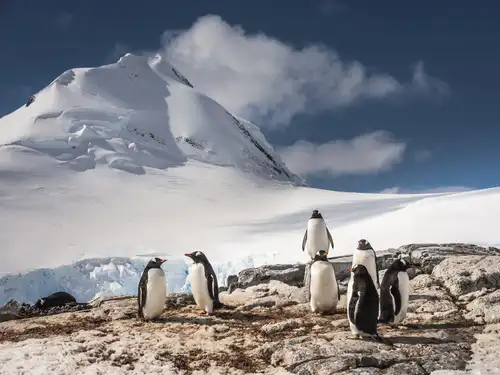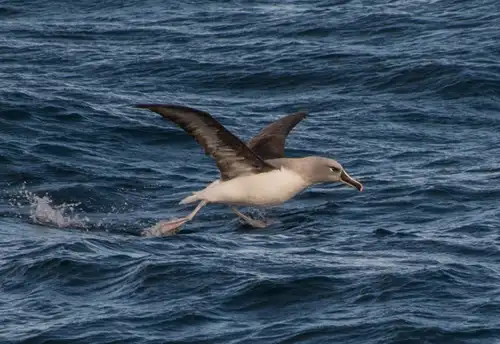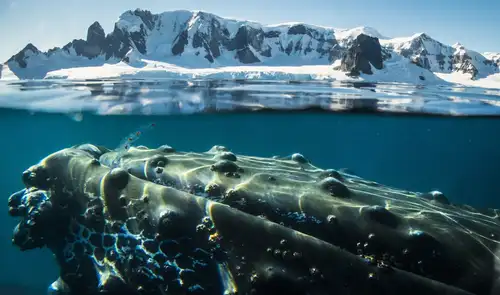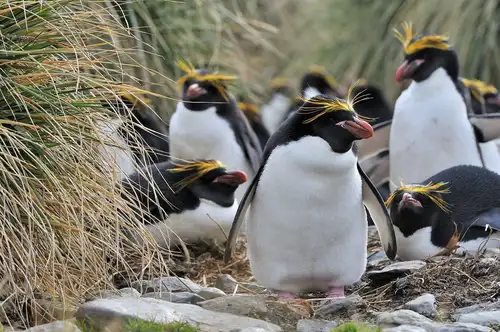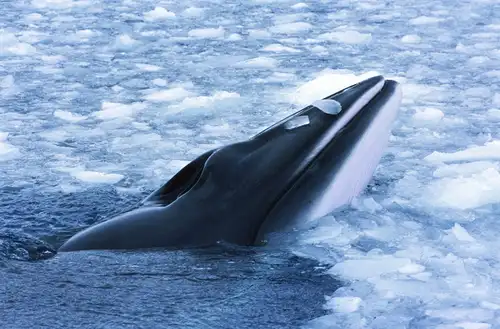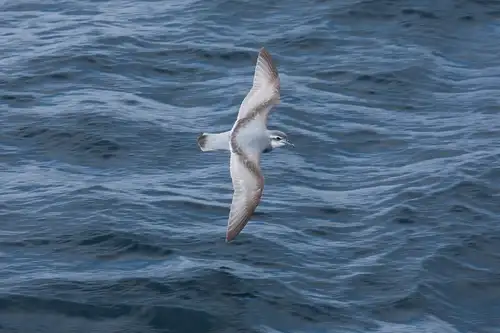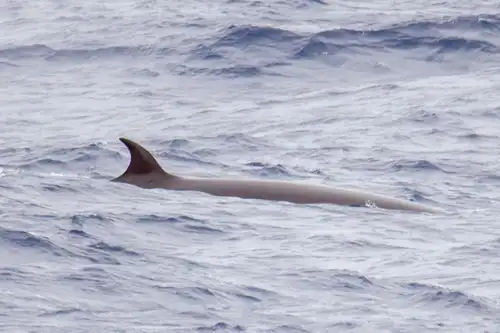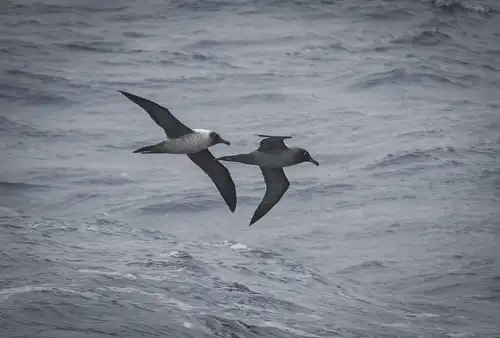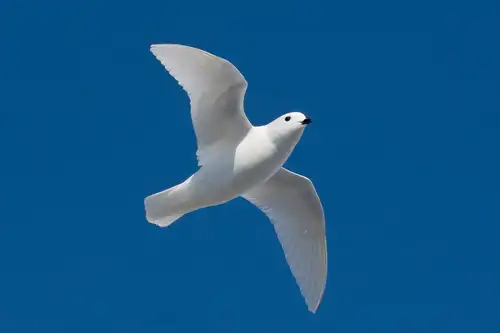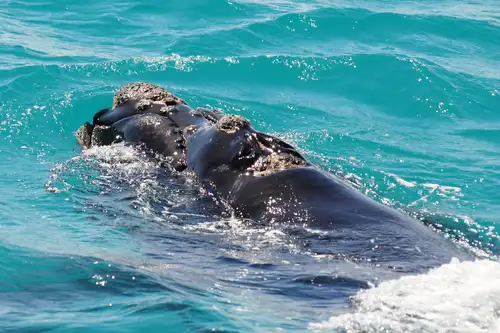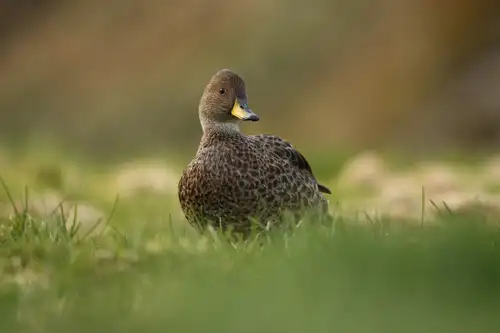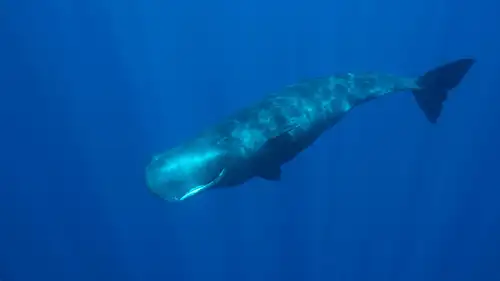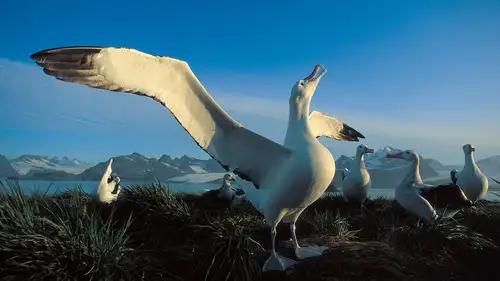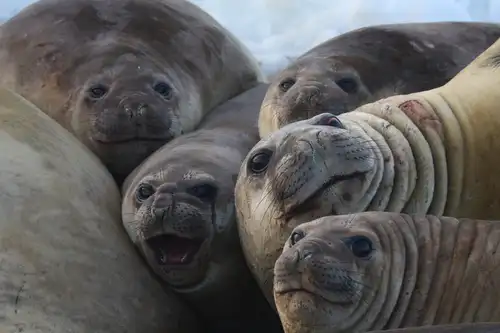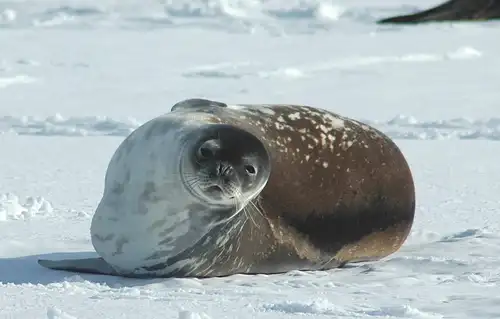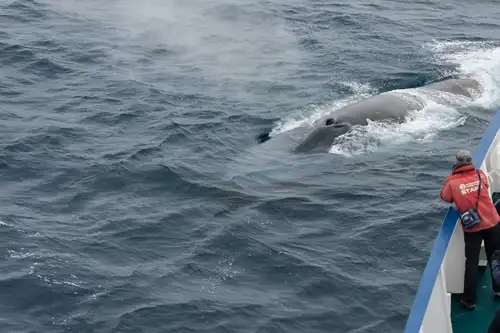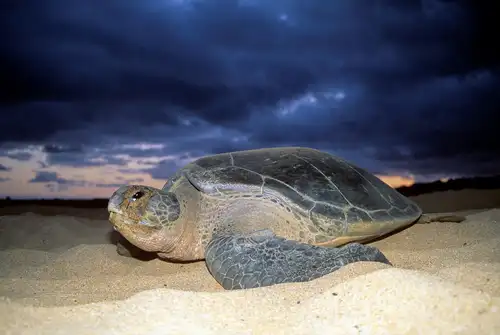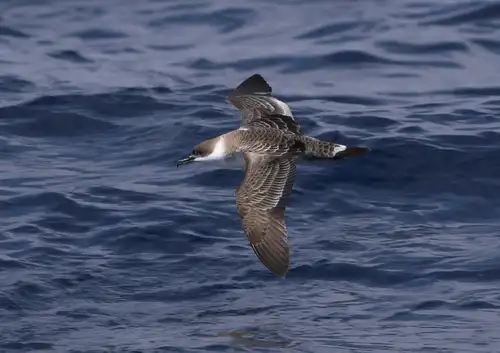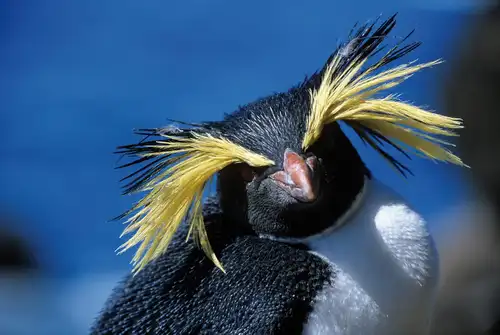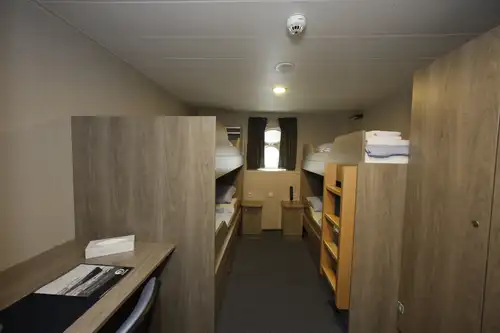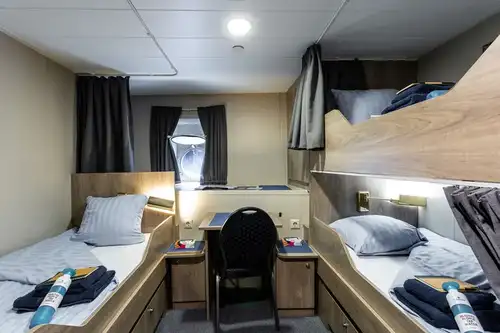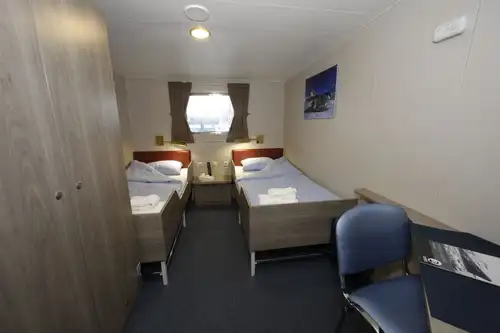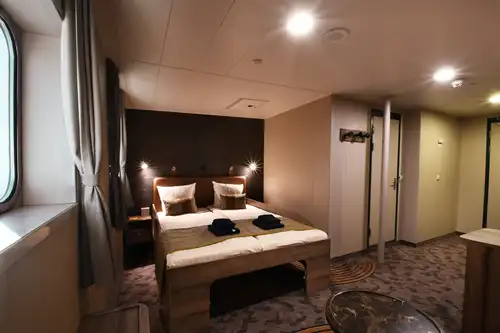
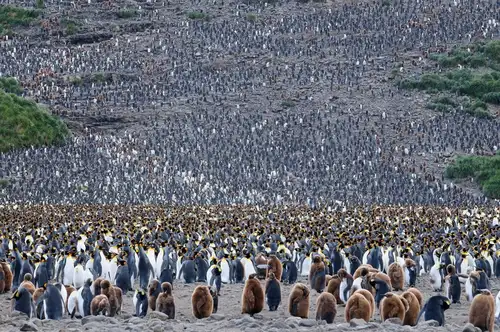
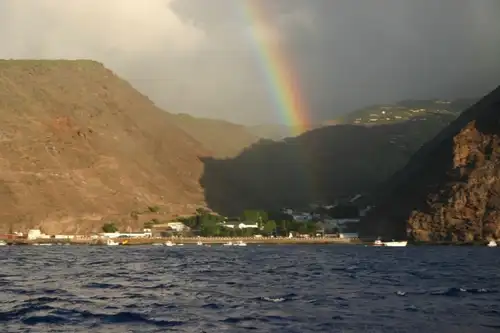
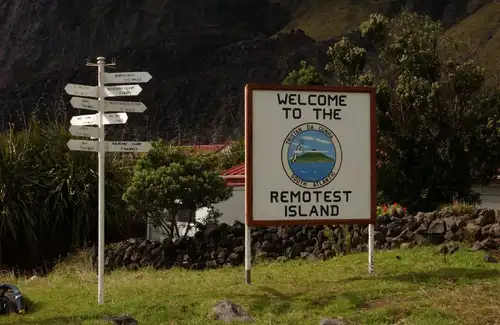
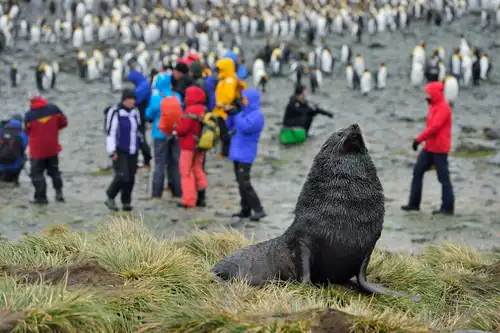

























 24 Days/23 Nights
24 Days/23 Nights




Note: All itineraries are for guidance only. Programs may vary depending on ice, weather, and wildlife conditions. Landings are subject to site availabilities, permissions, and environmental concerns per AECO regulations.
Your expedition begins where the world drops off: Ushuaia, Argentina, said to be the southernmost city on the planet, located on the far southern tip of South America. Starting in the afternoon, we set off from this small resort town on Tierra del Fuego (nicknamed “The End of the World”) and sail the mountainous Beagle Channel for the rest of the evening.
Sea route to South Georgia
Today we are on our way to South Georgia. After passing the Antarctic Convergence, which is a natural boundary formed when north-flowing cold waters collide with warmer sub-Antarctic waters, we enter the circum-Antarctic upwelling zone. Not only does the marine life change, the bird life changes, too: A variety of albatrosses and petrels show up, along with Cape pigeons and southern fulmars.
South Georgia sights
Our aim today is to visit some of the world’s top king penguin rookeries. This time of year you have a good chance of seeing these animals nesting on eggs, with their chicks nearby. The rookeries are sometimes overflowing, with penguins traveling to and from the beach.
Possible visits in this region include:
- Salisbury Plain, St. Andrews Bay, Gold Harbour – Here you can see not only the massive king penguin colony, but also elephant seals and limitless fur seal pups playing in the surf.
- Grytviken – We also have the opportunity to check out this abandoned whaling station, where king penguins walk the streets and elephant seals lie around like they own the place – because they basically do! You might also see the South Georgia Museum as well as Shackleton’s grave here.
- Cooper Bay – This is a fine place for a Zodiac cruise, and this bay also houses a rookery of macaroni penguins. King penguins, pintails, and giant petrels may also appear here.
- Moltke Harbour – Located in Royal Bay, this scenic spot gives you the chance to see the huge king penguin colony that lives here.
Once more to the sea
A pleasant tailwind often accompanies the vessel through the westerlies, and on both sides of the Antarctic Convergence, you might see large numbers of Antarctic and sub-Antarctic seabirds.
The quest continues at the great Gough Island
Today we plan to approach Gough Island for a Zodiac cruise in Quest Bay, if the weather permits. Here you might see northern rockhopper penguins and sub-Antarctic fur seals. In previous years, it has been possible for us to circumnavigate most of Gough Island’s 33-mile circumference, taking in this area’s splendid scenery and abundant wildlife.
Tristan da Cunha and all the pretty birds
The remote islands of Tristan da Cunha are famed for their plentiful bird populations, which include rockhopper penguins, several species of albatross, petrels, skuas, terns, and many others. Our goal during this stage of our expedition is to visit the small settlement on the west side of the main island, but we might also land at Seal Bay on the south side of Tristan da Cunha or at Sandy Point on the east side.
In these stunning locations, you could encounter such exotic wildlife as yellow-nosed albatrosses and sub-Antarctic fur seals, all while exploring a rarely visited spot. We also intend to land at Nightingale Island and Inaccessible Island, both of which offer great views of beautiful seabirds ranging from yellow-nosed albatrosses to brown noddies.
Two days are reserved at Tristan da Cunha in case of bad weather, but please remember that nature determines our itineraries here: Since beginning the Atlantic Odyssey cruise in 1998, adverse weather led to the cancellation of 35% of Tristan da Cunha landings. If we have to divert for safety reasons, we will find good alternatives.
Subtropical seas and seabirds
Seabirds and dolphins indigenous to this region often follow the vessel.
Highlights of Saint Helena
After we land at Jamestown on Saint Helena Island, you will have the opportunity to enjoy the area’s local culture, pleasant climate, and endemic bird life. You can pay a visit to Longwood House, where Napoleon died in exile; walk the 699-step Jacob’s Ladder, if you’re feeling ambitious; or snorkel the shallows offshore, seeing multitudes of tropical and subtropical fish.
Please note: You have the option to disembark and fly home from Jamestown, if flights are available. In the evening, we will depart for Ascension Island and Praia, Cape Verde, where you can also disembark.







































































m/v Plancius
Our most longstanding vessel, Plancius, is a classic choice for many of our most popular polar voyages.

Specifications
| Passengers: | 108 passengers in 50 cabins |
| Staff & crew: | Crew 40 | Guides 8 | Doctor 1 |
| Length: | 89 meters (293 feet) |
| Breadth: | 14,5 meters (47 feet) |
| Draft: | 5 meters (16 feet) |
| Ice class: | 1D (Plancius has a Lloyds class notation 100A1 Passenger ship, Ice Class 1D at a draught of 5 meters) |
| Displacement: | 3211 tonnes |
| Propulsion: | 3x Diesel-Electric |
| Speed: | 10.5 knots average cruising speed |
Cabins Gallery


Ship Interior Gallery


Ship Exterior Gallery


M/v “Plancius” was built in 1976 as an oceanographic research vessel for the Royal Dutch Navy and was named “Hr. Ms. Tydeman”. The ship sailed for the Dutch Navy until June 2004 and was eventually purchased by the company. The vessel was completely rebuilt as a passenger vessel in 2009 and complies with the latest SOLAS-regulations (Safety Of Life At Sea). M/v “Plancius” is classed by Lloyd’s Register and flies the Dutch flag.
Perfect for any expedition
M/v “Plancius” accommodates 108 passengers with private toilets and shower in 4 quadruple porthole cabins, 9 twin porthole cabins, 25 twin cabins with windows and 2 twin deluxe cabins, all (ca. 12,5 square meters) and 10 twin superior cabins (ca. 21 square meters). All cabins offer lower berths (one queen-size bed in the superior cabins and two single beds in the twin cabins), except for the 4 quadruple cabins (for 4 persons in 2x upper and lower beds).
Plancius: a vessel with comfort and character
Please be aware that a small number of cabins may have a partially obstructed view due to the design requirements of the ship. The best view is always on the outer deck or the bridge. The vessel offers a restaurant/lecture room on deck 3 and a spacious observation lounge (with bar) on deck 5 with large windows, offering a full panorama view. M/v “Plancius” has large open deck spaces (with full walk-around possibilities on deck 4), giving excellent opportunities to enjoy the scenery and wildlife. She is furthermore equipped with 10 Mark V zodiacs, including 40 HP 4-stroke outboard engines and 2 gangways on the starboard side, guaranteeing a swift zodiac operation.
M/v “Plancius” is comfortable and nicely decorated, but is not a luxury vessel. Our voyages in the Arctic and Antarctic regions are primarily defined by an exploratory educational travel program, spending as much time ashore as possible. Plancius fully meets our demands to achieve this. The vessel is equipped with a diesel-electric propulsion system which reduces the noise and vibration of the vessel considerably. The 3 diesel engines generate 1.230 horsepower each, giving the vessel a speed of 10 - 12 knots. The vessel is ice-strengthened and was specially built for oceanographic voyages. M/v “Plancius” is manned by an international crew of 40 (20 nautical crew and 20 hotel crew), 8 expedition staff (1 expedition leader, 1 assistant expedition leader and 6 guides/lecturers), and 1 doctor.
Dress code
In keeping with our expedition atmosphere, dress on board is informal. Bring casual and comfortable clothing for all activities. Keep in mind that much of the spectacular scenery can be appreciated from deck, which can be slippery. Bring sturdy shoes with no-slip soles and make sure the parka is never far away in case of the call "Whales!" comes over the loudspeaker and you have to dash outside. Wear layers since it is comfortably warm aboard the ship - and often cold on deck.
Currency & payment
Refreshments from the bar and souvenirs will be charged to your cabin. The day before departure you can settle your bill with the Hotel Manager and pay by credit card (Visa or MasterCard) or cash (Euro or Dollar). We do not accept cheques of any kind. The price and standard currency on board our vessels is the Euro. Other currencies may be accepted at the discretion of the hotel manager at prevailing rates.
Electric current
The electrical supply aboard the ship is 220v, 60Hz. Electrical outlets are standard European with two thick round pins. You may need a 220v/110v converter.
Gratuities
The customary gratuity to the ship's service personnel is made as a blanket contribution at the end of the voyage which is divided among the crew. Tipping is a very personal matter and the amount you wish to give is at your discretion. As a generally accepted guideline, we suggest 8-15 Euro per person per day. It is better for the crew, if you can give them cash.
Non-smoking policy
On board our vessels we have a non-smoking policy. It is prohibited to smoke inside the ship. You can smoke in the designated smoking areas. Please respect the wishes of non-smokers.
Your physical condition
You must be in good general health and you should be able to walk several hours per day. The expedition is ship-based and physically not very demanding. Although we spend as much time as possible ashore, you are welcome to remain aboard the ship if you like. To join most excursions, you must be able to get up and down the steep gangway from the ship to the water level to board the Zodiacs. Staff will assist you in and out of the boats. This will become progressively easier with practice. Ashore it can be slippery and rocky. You are travelling in remote areas without access to sophisticated medical facilities, so you must not join this expedition if you have a life-threatening condition, or need daily medical treatment.

The average price for flights (round trip) to Ushuaia
From Jakarta: $2,300
From Singapore: $2,500
From Kuala Lumpur: $1,900
Insurance Requirements:
- Mandatory Insurance: All travelers must have insurance covering medical expenses, accidents, and repatriation/evacuation.
- Recommended Insurance: It is strongly recommended to include cancellation insurance for added protection.
Drone Usage Policy:
- Prohibited: The use of drones is strictly prohibited during the expedition.
Clothing and Gear Recommendations:
- Water-Resistant Coat and Pants: Essential for protection against the wet and windy conditions.
- Layered Underwear: To ensure warmth and comfort in extreme weather.
- Sunglasses: Necessary to protect against the strong UV rays and glare from the snow.
- Gloves: Insulated and water-resistant gloves to keep your hands warm and dry.
- Additional Items: Consider packing a warm hat, thermal socks, and sturdy waterproof boots.
- Voyage aboard the indicated vessel
- All meals throughout the voyage aboard the ship including snacks, coffee and tea.
- All shore excursions and activities throughout the voyage by Zodiac.
- Program of lectures by noted naturalists and leadership by experienced expedition staff.
- Free use of rubber boots and snowshoes.
- Pre-scheduled group transfer from the vessel to the airport in Ushuaia (directly after disembarkation).
- All miscellaneous service taxes and port charges throughout the programme.
- Comprehensive pre-departure material.
- Flights to the embarkation point and from the disembarkation point.
- Pre- and post- land arrangements.
- Passport and visa expenses.
- Meals ashore.
- Personal health Insurance for Medical, Accident and Repatriation/Evacuating.
- All personal expenses, including but not limited to laundry services, bar beverages, and excess internet usage charges.
- The customary gratuity at the end of the voyages for stewards and other service personnel aboard (guidelines will be provided).
- Expeditions cruises are trips that focus on maximum contact with local wildlife, natural phenomena, and locations of cultural/scientific significance. These trips are best enjoyed in relatively small groups led by highly experienced expedition guides.
- You need to be in good general health and able to walk several hours per day. Though our expeditions are ship-based, they can be physically demanding. You can choose to stay on the vessel if you prefer, but you will still need to be able to move safely around the ship even in bad weather. Assuming you choose to join landings, you will need to be able to get in and out of the Zodiacs. You must also be capable of getting up and down the gangway. This will become easier with practice, but the gangway is steep and moves with the rocking of the vessel. Conditions on shore can also be rocky, uneven, and slippery, and we will be in remote areas without access to sophisticated medical facilities. You must not join an expedition if you have a life-threatening condition or need daily medical treatment. Any major health problem or physical condition that requires emergency care must be brought to our attention prior to the voyage. Please fill out our Personal Information Form, which we will send at the time of booking. This form must be completed and returned within one month of your book date. Since we travel in such remote areas, medical evacuation by air is often impossible. We therefore reserve the right to refuse travel or participation in activities to anyone whose health concerns might pose a safety risk to our staff or other passengers.
- We accept payment via bank transfer, Wise or credit card (Mastercard and Visa). When paying with a credit card, we have to pass on a credit card fee.
- When you make a confirmed reservation, we require a 40% deposit. But if the reservation is made within two months prior to departure, the full price of the voyage is due at the time of booking.
- South Georgia has no resident population. Throughout the year, the research station and governmental facilities are staffed from GSGSS and BAS. In the summer season, the numbers increase with staff from SGHT as well as science and government projects. The winter population is generally about eight people, and in the summer around 40.
- South Georgia follows Gulf Standard Time (GST). This means that if it is 16:00 GST (4 p.m.) during your holiday to South Georgia, it would be 14:00 (2 p.m.) in New York City, 19:00 (7 p.m.) in London, and 6:00 (6 a.m.) the following morning in the Antarctic South Pole. On an expedition cruise, the vessel often stays at Argentinean time (GMT °3) in order to avoid several time changes on board.
- There are in total 50 cabins at the Plancius: 4 quadruple cabins with private toilet and shower 9 twin porthole cabins 25 twin cabins with window 2 twin deluxe cabins (ca 15 square meters) 10 superior cabins (ca 21 square meters)
- The ship Plancius was built in 1976 as an oceanographic research vessel for the Royal Dutch Navy.
You May Also Like


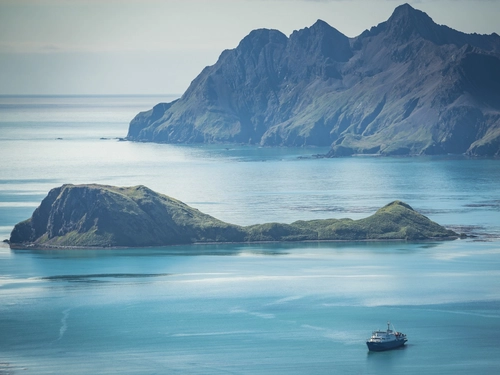
Falkland Islands - South Georgia - Antarctica
 19 Days / 18 Nights
19 Days / 18 Nights

Remote Weddell Sea Explorer incl. South Georgia - South Sandwich Islands - Neuschwabenland - Larsen Ice Shelf - Paulet and Devil Island - Elephant Island, incl. helicopters
 28 Days / 27 Nights
28 Days / 27 Nights

Falkland Islands - South Georgia - Elephant Island - Antarctica - Polar Circle
 23 Days / 22 Nights
23 Days / 22 Nights
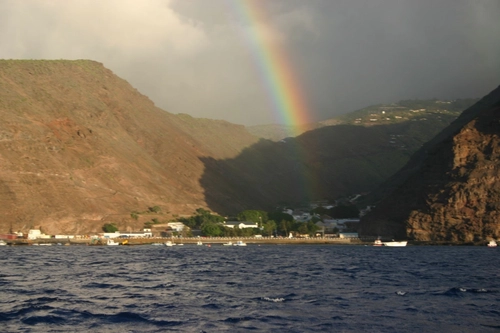
Atlantic Odyssey, excl. Antarctic Peninsula
 24 Days / 23 Nights
24 Days / 23 Nights

Falkland Islands - South Georgia - Antarctic Peninsula - Photography special
 21 Days / 20 Nights
21 Days / 20 Nights

Falkland Islands - South Georgia - Antarctic Peninsula
 21 Days / 20 Nights
21 Days / 20 Nights

Falkland Islands - South Georgia - Antarctic Peninsula - Birding
 19 Days / 18 Nights
19 Days / 18 Nights

St. Helena to Cape Verde
 11 Days / 10 Nights
11 Days / 10 Nights
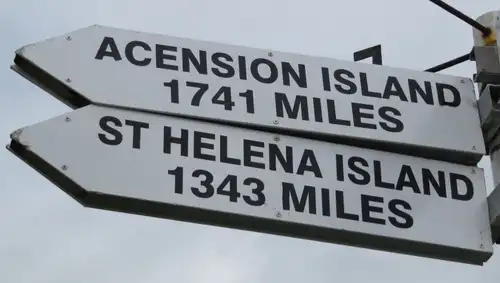
What to pack for your Atlantic Odyssey voyage?
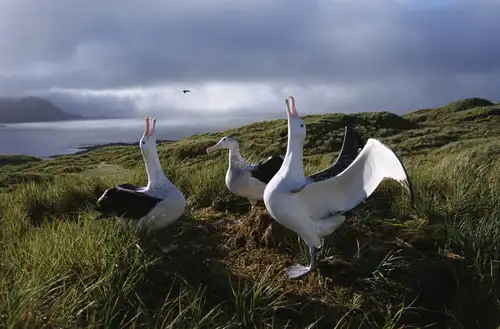
Albatross, penguin and krill research in Antarctica

Top Antarctica Cruise Experiences for 2025
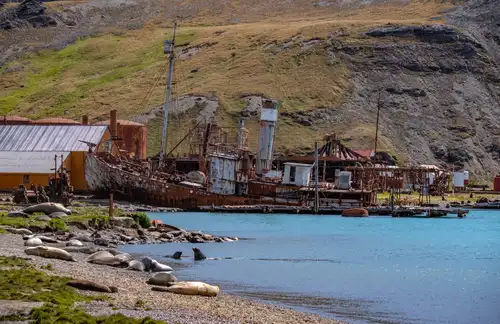
South Georgia Whaling Stations

Of Treacherous Rocks & Audacious Fin Whales
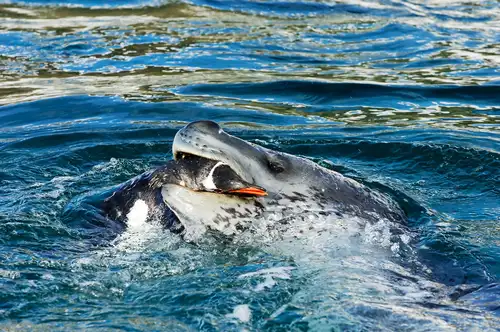
Danger Beneath the Water: 10 Facts About Leopard Seals

15 Fantastic Photos of Antarctica
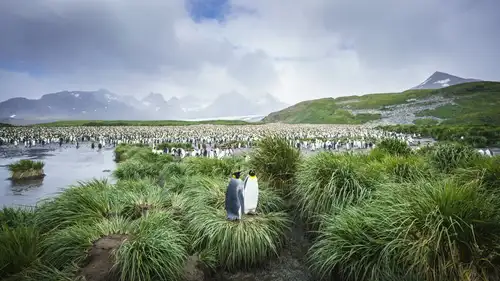
The South Georgia Seven: Hikes, Fjords, Whales, & Penguins
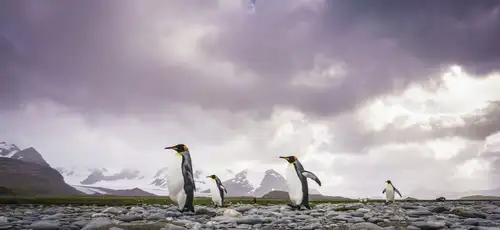
Penguins, Albatrosses, Petrels: The Winged Wildlife of South Georgia

Experience King Penguins, Seals and More in South Georgia
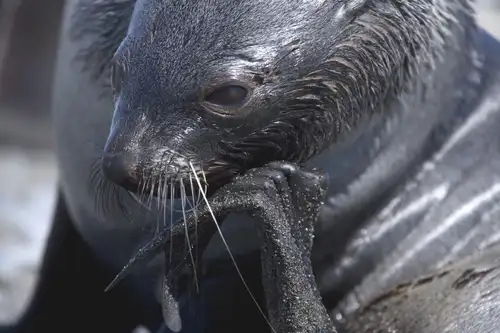
Coming Back from the Brink: The Fur Seals of Antarctica
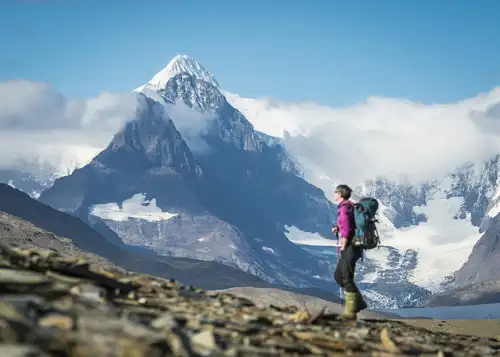
Path of Polar Heroes: Hiking Shackleton’s Historic Route

Weddell Sea, Shackleton’s Endurance, and New Swabia

The Eight Albatrosses of Antarctica and the Sub-Antarctic

8 Whales You Might See During Your Antarctica Cruise
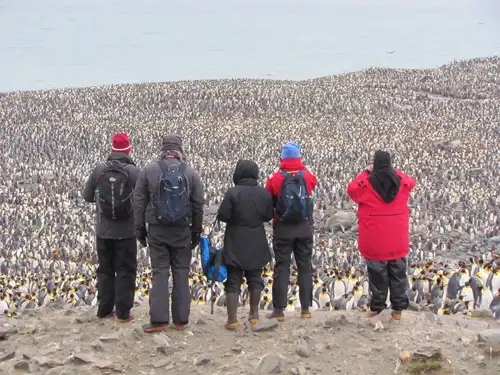
Scenes from St. Andrews Bay: 12 Pics of Penguins, Seals, and More

The Research Stations of Antarctica and the sub-Antarctic

The Eight Great Penguin Species of Antarctica

Cheapest Antarctica Cruises: How to Save on Your Journey
